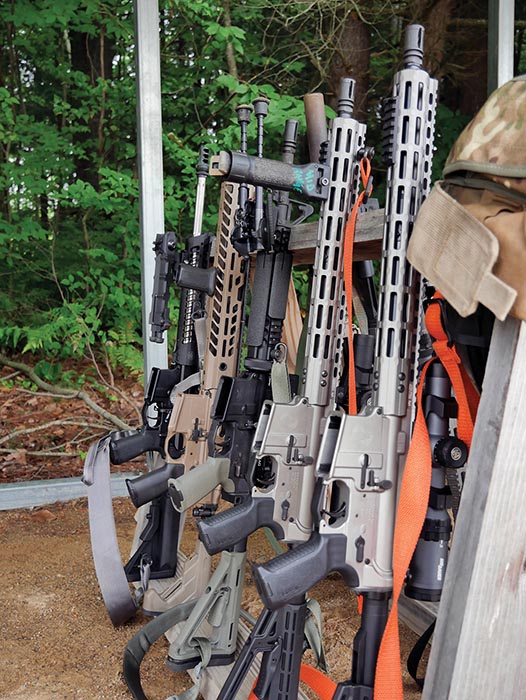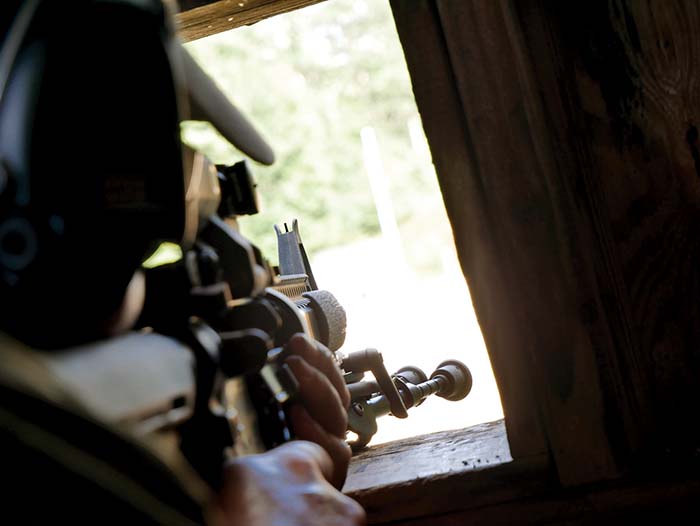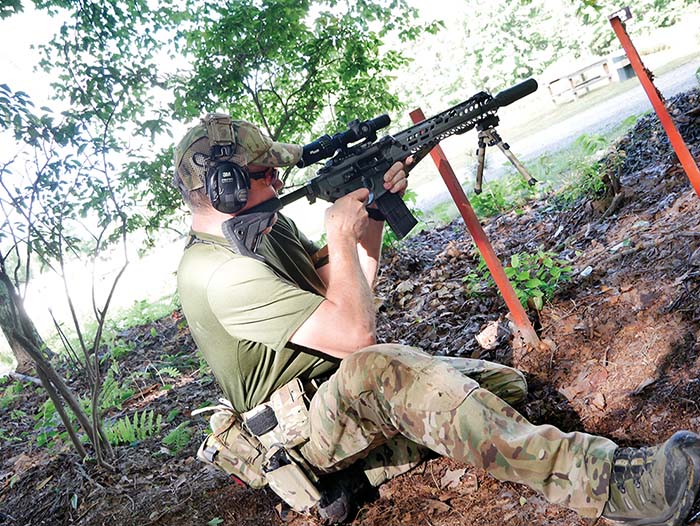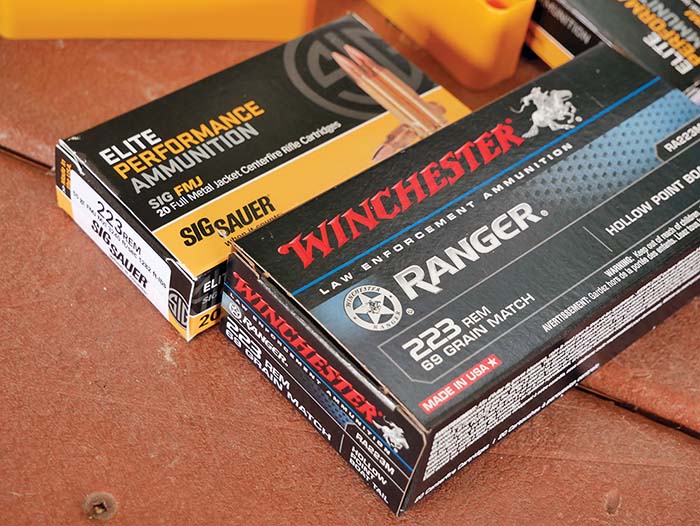Not all rifles were direct impingement AR-15s or even SIG MCXs; this example being a 5.56x45mm Bren 805 from CZ-USA registered as a pistol with the stabilizing brace along with a suppressor stamp. The particular drill here involved two shooters simultaneously shooting at a steel target shooting tree with three revolving steel circles on both sides of a single beam. The goal was to shoot all the targets to your competitor’s side of the beam while at 100m.
By Miles Vining
Can Your Rifle Go the Distance?
There are a number of shooters and instructors who say that many of the current 5.56x45mm carbines on the market aren’t being used to their full capacity. Of course, being proficient with an AR-15 that has a 16-inch barrel at distances of 25 meters is extremely important. It lends itself well to realistic home defense situations, and this is where the majority of law enforcement encounters take place. But why stop there, especially for law enforcement? If an active threat can be stopped from a distance, then why not train for that situation given that the weapon systems being employed can absolutely reach out to ranges of 100-300 meters with quality optics, ammunition and most importantly the training?
The SIG SAUER Academy’s answer to this is the Mid-Range Carbine Course offered by the Epping, New Hampshire-based training school. The skill building course is an onsite offering through the Academy where it is run on part of a complex situated over 10 acres of live-fire and simulation training ranges for the armed citizen or a member of law enforcement or the military. In addition to Mid-Range Carbine, there are a vast amount of courses offered, ranging from CQB tactics with handguns and rifles to long-range precision marksmanship. Most are 1-day courses, but there are a few that run several days due to the length and topics covered.

The Mid-Range Carbine Course initially began due to a rising interest across the industry from both a civilian marksmanship and a law enforcement perspective to push the capabilities of personally owned and department rifles when it comes to shooting from 100-300 meters. The course also requires a more refined understanding of the fundamentals of marksmanship when that range increases. As one instructor put it, everyone is a sniper at 25 meters and in.
The course started with our instructors (full-time SIG SAUER Academy staff), Dillon Kenneson (Lead) and Colin Murphy (Assistant), discussing the difference between some of the trajectories we were going to see in the course and most importantly which range to zero our rifles at and why. The old adage of zeroing at 36 yards for a 300-yard battle sight zero works well for an infantry application, but outside of the military, it has proved to be far less useful when it comes to bullet drop at these further ranges. Instead, many instructors have been working with 50- and even 100-meter zeros for battle rifles simply because the tradeoff at those further ranges with bullet drop is much more worthwhile. This is especially true when we factor in using a center mass point aim and allowing for a vertical spread that will still allow us to maintain the same point of aim on a humanoid target (steel, paper) out to 300 and even 400 meters.
Range Time
After the initial instruction, we got out to the range and started zeroing our rifles. The class size was under 10 which worked well for the two instructors who were able to go between students to make adjustments and corrections. When initial zeroing was complete we started working on the distance drills; the hands-on, practical application portion of the course. This consisted of working between the 100-, 200- and 300-meter firing lines, going into different shooting positions that challenged us to try and make good shots despite shooting offhand. Targets used were paper silhouettes and bullseye concentric circles in addition to steel silhouettes. The paper was used to gauge our accuracy in different positions, how tight we could get those groups, while the steel was used to quickly see if what we were doing was actually working on target without having to walk downrange to register results.

During the course of shooting the topics discussed in the classroom quickly became apparent. Zeroing at 25, 50 and even 100 started to become very evident as students began shooting groups they either were extremely surprised at or genuinely displeased with. Corrections had to made, and some had to re-zero or change their distances as they realized their errors. The other piece that became readily apparent was the actual equipment that was being used. Many of the students hadn’t been able to reach out to the distances we were shooting at with the rifles they owned. For the majority this was simply because they lived in urban centers that don’t allow for longer ranges to exist in a relatively close distance to their homes. But even for those who did shoot long-range, not having the exposure to the various positions and conditions in the course allowed them to test out their gear.

Unfortunately, students found out that some of their latest tactical ware either wasn’t all it was caked out to be or was lacking in some area. Whether it was a magazine, a scope, bipods or even a bolt hold open device, putting the items through their paces was an excellent test that they otherwise wouldn’t have been able to go through. Less than a detractor, this is certainly one of the more important parts of any shooting course; learning about your own equipment and how it works or actually doesn’t work while under stress.

At the end of the day with spent brass covering the range, the class was concluded and certificates issued. For many of the students, it was their first in-depth introduction to long-range shooting skills with a carbine.

For more information on classes offered see sigsaueracademy.com.
| This article first appeared in Small Arms Review V23N2 (February 2019) |











